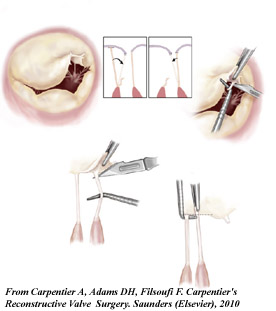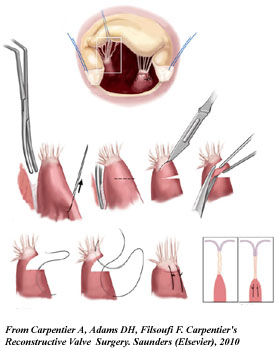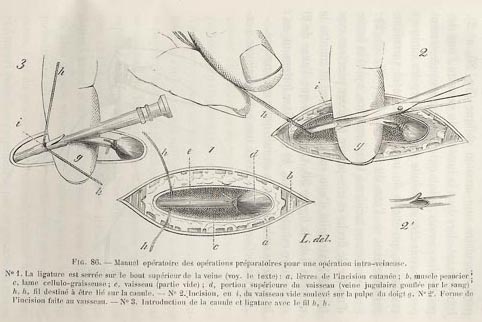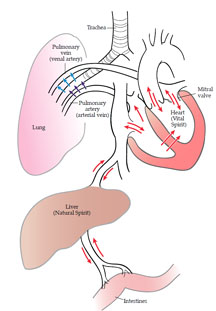Mitral Valve Prolapse Causes, Symptoms and Treatments
Posted by themitralvalve in Mitral Valve on February 13, 2012
Mitral valve prolapseis a heart problem in which the valve that separates the upper and lower chambers of the left side of the heart does not close properly. Mitral valve prolapse (MVP) is also called click-murmur syndrome, floppy mitral valve syndrome, and Barlow syndrome after the doctor who first described MVP.
The mitral valve is a one-way valve in the left side of the heart that can be affected by two main malfunctions:
It can be stiff and heavily calcified and therefore does not open well, a condition known as Mitral Stenosis. It can have a severe leakage because of a deformity or localized rupture that prevents it from closing well, a condition known as Mitral Insufficiency or Regurgitation
The mitral valve is one of 4 valves in the heart. It opens and closes to control blood flow between the heart’s left atrium and the left ventricle. The mitral valve has 2 flaps, or “leaflets.”
In mitral valve prolapse, one or both leaflets of the valve are too large, or the chordae tendinea (the strings attached to the underside of the leaflets, connected to the ventricular wall) are too long (redundant), resulting in uneven closure of the valve during each heartbeat. Because of uneven closure of the leaflets, the valve bulges back, or “prolapses,” into the left atrium like a parachute. When this happens, a very small amount of blood may leak through, moving backward from the ventricle to the atrium.
The valve still works well, and the heart pumps normally. Prolapse does not cause damage to the heart over time. Only 2% of people have other structural heart problems along with mitral valve prolapse.
Previously called the most common heart valve abnormality, mitral valve prolapse was thought to have affected 5-20% of the general population, mainly women. Now with newer, wiser echocardiographic criteria, it is thought to affect only 2-3% of the general population, and it is most often diagnosed in people aged 20-40 years.
Mitral Valve Prolapse Causes
Up to 40% of people have dysautonomia, an imbalance of the autonomic nervous system. This is the part of the nervous system that controls involuntary body functions such as breathing and the beating of the heart. This may lead to a large number of symptoms that seem serious to the person with the symptoms but are usually not serious (that is, they are not heart conditions).
Mitral Valve Prolapse Symptoms
About 60% of people with mitral valve prolapse have no symptoms. A stressful situation, such as childbirth, job change, or viral illness, can bring on symptoms that may include the following:
Irregular heartbeat or palpitations, especially while lying on the left side
Chest pain – Sharp, dull, or pressing, lasting from a few seconds to several hours, usually not related to myocardial ischemia (that is, not a threatened heart attack)
Mitral Valve Prolapse Treatment
Mitral valve prolapseusually requires no specific treatment, except reassurance, since most people do not have serious underlying heart disease. Rather, care focuses on minor changes a person can make that may prevent symptoms.
The condition usually requires no activity restrictions, but the person should avoid competitive sports if he has a definite click and murmur of significant mitral insufficiency. Most people have minimal, if any, mitral insufficiency.
Mitral valve regurgitation
Posted by themitralvalve in Mitral Valve on January 25, 2012
For mild cases, treatment may not be necessary.Mitral valve regurgitationhappens when your heart’s
mitral valve doesn’t close tightly, which allows blood to flow backward in your heart.Treatment of
mitral valve regurgitation depends on how severe your condition is, whether it’s getting worse, and
signs and symptoms.Mitral valve regurgitation is also called mitral insufficiency or mitral
incompetence.
You may need heart surgery to repair or replace the valve for more-severe cases.Left untreated, severe mitral valve regurgitation can cause heart failure or serious heart rhythm problems (arrhythmias).When the mitral valve doesn’t work properly, blood can’t move through your heart or to the rest of your body as efficiently, making you feel tired or out of breath.
What is the treatment for mitral valve prolapse?
Posted by themitralvalve in Mitral Valve on January 24, 2012
Beta-blockers, such as atenolol (Tenormin), metoprolol (Lopressor), and propranolol (Inderal), are the
drugs of choice.Examples of antibiotics used include oral amoxicillin and erythromycin as well as
intramuscular or intravenous ampicillin, gentamycin, and vancomycin.Since valve infection,
endocarditis, is a rare, but potentially serious complication of mitral valve prolapse, patients with
mitral valve prolapse are usually given antibiotics prior to any procedure which can introduce bacteria
into the bloodstream.Patients with severe prolapse, abnormal heart rhythms, spells, significant
palpitations, chest pain, and anxiety attacks may need treatment.These act by increasing the size of
the left ventricle, thereby reducing the degree of prolapse.These procedures include routine dental
work, minor surgery, and procedures that can traumatize body tissues such as , gynecologic, or urologic
examinations.
For these individuals, routine examinations including echocardiograms every few years may suffice.The calcium blockers verapamil (Calan) and diltiazem (Cardizem) are useful in patients who cannot tolerate beta-blockers.Therefore, mitral valve prolapse patients with mitral regurgitation are often evaluated annually.The vast majority of patients with mitral valve prolapse have an excellent prognosis and need no treatment.
Mitral regurgitation in patients withmitral valve prolapsecan lead to heart failure, heart
enlargement, and abnormal rhythms.







